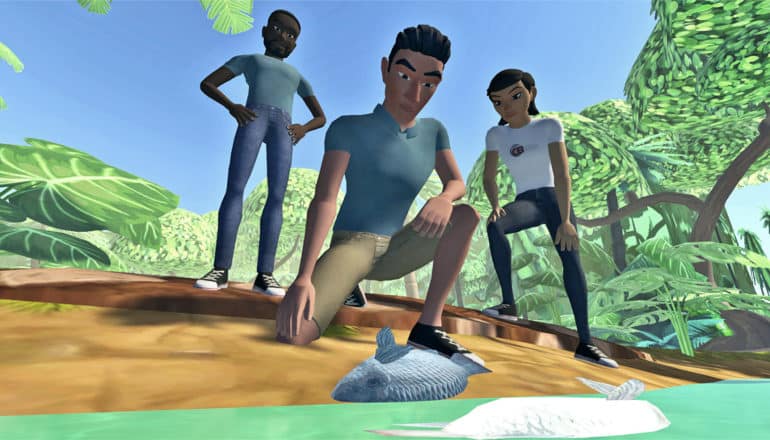
An educational video game made using a new framework fostered both learning and collaboration among sixth graders, a proof-of-concept test shows.
The framework is one of the first to bring together two well-studied approaches to educational software, narrative-centered learning and collaborative learning techniques, laying the groundwork for future efforts in the field.
“There’s been a lot of work on computer-supported collaborative learning,” says coauthor Jonathan Rowe, a research scientist in North Carolina State University’s Center for Educational Informatics (CEI). “But that work hasn’t focused on rich, narrative game environments—it’s been more along the lines of online discussion forums for students.
“Meanwhile, there’s also been a lot of work on narrative-centered learning environments,” Rowe says. “But those have focused largely on single-player settings—because constructing immersive games that are educational and engaging for multiple players is extremely challenging.”
Educators with or without programming skills
“We’ve developed a conceptual framework for combining these two educational approaches—interactive narratives and collaborative, problem-based learning—and then created a software architecture and suite of game-creation tools for implementing that framework,” says first author Bradford Mott, senior research scientist at CEI.
“One of the things we focused on here was creating a set of tools that educators can use, regardless of their programming skills,” says Robert Taylor, a research software engineer at CEI. “Specifically, allowing educators to modify a story’s dialogue and plotlines, and to see those changes almost immediately in the game.”
“Right now, this narrative editing feature is being used by our education research collaborators to help us make the best game possible,” Mott says. “But at some point, this may be a feature that can allow for classroom-specific game customization.”
An initial test of the video game
The team of education and computer science researchers has already used the framework to develop a game called Crystal Island: EcoJourneys, which focuses on ecosystems education. In pilot testing with a group of 45 middle schoolers, the researchers found students did learn from the game and exhibited effective collaboration skills.
“We deliberately chose a complex subject, because that makes for a scenario that lends itself to team-oriented problem solving,” Rowe says. “This early-stage testing suggests that we’re on the right track.”
“We’re now developing a more polished version of Crystal Island: EcoJourneys, which we’ll be testing on a larger scale next year,” Mott says. “More importantly, the approach we’re outlining here can already be used by others in the educational gaming community. This is an exciting area for the field.”
The researchers will present a paper based on their work at the Twelfth International Conference on Interactive Digital Storytelling. Additional coauthors are from NC State and Indiana University.
Support for the work came from the National Science Foundation.
Source: NC State
The post Sixth graders learn and collaborate in this video game appeared first on Futurity.
from Futurity https://ift.tt/2qcz9I5
No comments:
Post a Comment